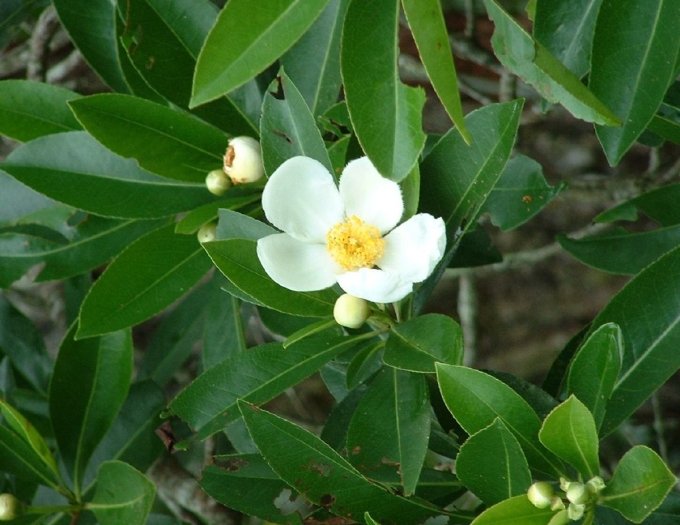Loblolly Bay
(Gordonia lasianthus)
Loblolly Bay (Gordonia lasianthus)
/
/

Tim Ross
Public domain
Image By:
Tim Ross
Recorded By:
Copyright:
Public domain
Copyright Notice:
Photo by: Tim Ross | License Type: Public domain | License URL: https://creativecommons.org/public-domain/ | Uploader: Tim Ross | Publisher: Wikimedia Commons | Title: GordoniaLasianthus21Jun03.jpg | Notes: {{Information |Description=''Grevillea alpina'' Lindl., Black Mountain, Canberra, ACT, 22 November 2010 |Source=[http://www.flickr.com/photos/dhobern/5196134441/ Grevillea alpina] * Uploaded by [[User:berichard|berichard]] |Date=2010-11-22 08:52 |Author=[ |



























































Estimated Native Range
Summary
Gordonia lasianthus, commonly known as Loblolly Bay, is an evergreen tree or large shrub native to wetlands, swamp margins, and low-lying wooded areas in the Southeastern USA. It typically grows to a height of 35-50 feet (11-15 meters) and a width of 28-42 feet (9-13 meters), with a narrow, upright form. The leaves are glossy, dark green, and the tree produces large, showy white flowers with a prominent tuft of yellow stamens in the summer, which are attractive to bees and butterflies. The bark is smooth and gray, becoming more furrowed with age.
Loblolly Bay is valued for its ornamental features, including the fragrant, white flowers that bloom in the summer and its evergreen foliage, which provides year-round interest. It is used in residential landscapes, particularly in wet areas where other plants may struggle. In cultivation, it requires consistently moist, acidic soils and part shade to full sun conditions. While it is slow-growing and can be difficult to transplant due to its taproot, once established, it is relatively low maintenance. However, it can be susceptible to leaf spot diseases and root rot if drainage is poor.CC BY-SA 4.0
Loblolly Bay is valued for its ornamental features, including the fragrant, white flowers that bloom in the summer and its evergreen foliage, which provides year-round interest. It is used in residential landscapes, particularly in wet areas where other plants may struggle. In cultivation, it requires consistently moist, acidic soils and part shade to full sun conditions. While it is slow-growing and can be difficult to transplant due to its taproot, once established, it is relatively low maintenance. However, it can be susceptible to leaf spot diseases and root rot if drainage is poor.CC BY-SA 4.0
Plant Description
- Plant Type: Tree, Shrub
- Height: 40-60 feet
- Width: 15-30 feet
- Growth Rate: Slow
- Flower Color: White
- Flowering Season: Summer
- Leaf Retention: Evergreen
Growth Requirements
- Sun: Full Sun, Part Shade
- Water: High
- Drainage: Fast, Medium
Common Uses
Bee Garden, Bird Garden, Butterfly Garden, Fragrant, Hummingbird Garden, Salt Tolerant, Showy Flowers, Street Planting, Water Garden
Natural Habitat
Wetlands, swamp margins, and low-lying wooded areas in the Southeastern USA
Other Names
Common Names: Loblollybay Gordonia
Scientific Names: , Gordonia lasianthus, Gordonia pyramidalis, Hypericum lasianthus, Lasianthus pyramidalis,
GBIF Accepted Name: Gordonia lasianthus L. ex Ellis